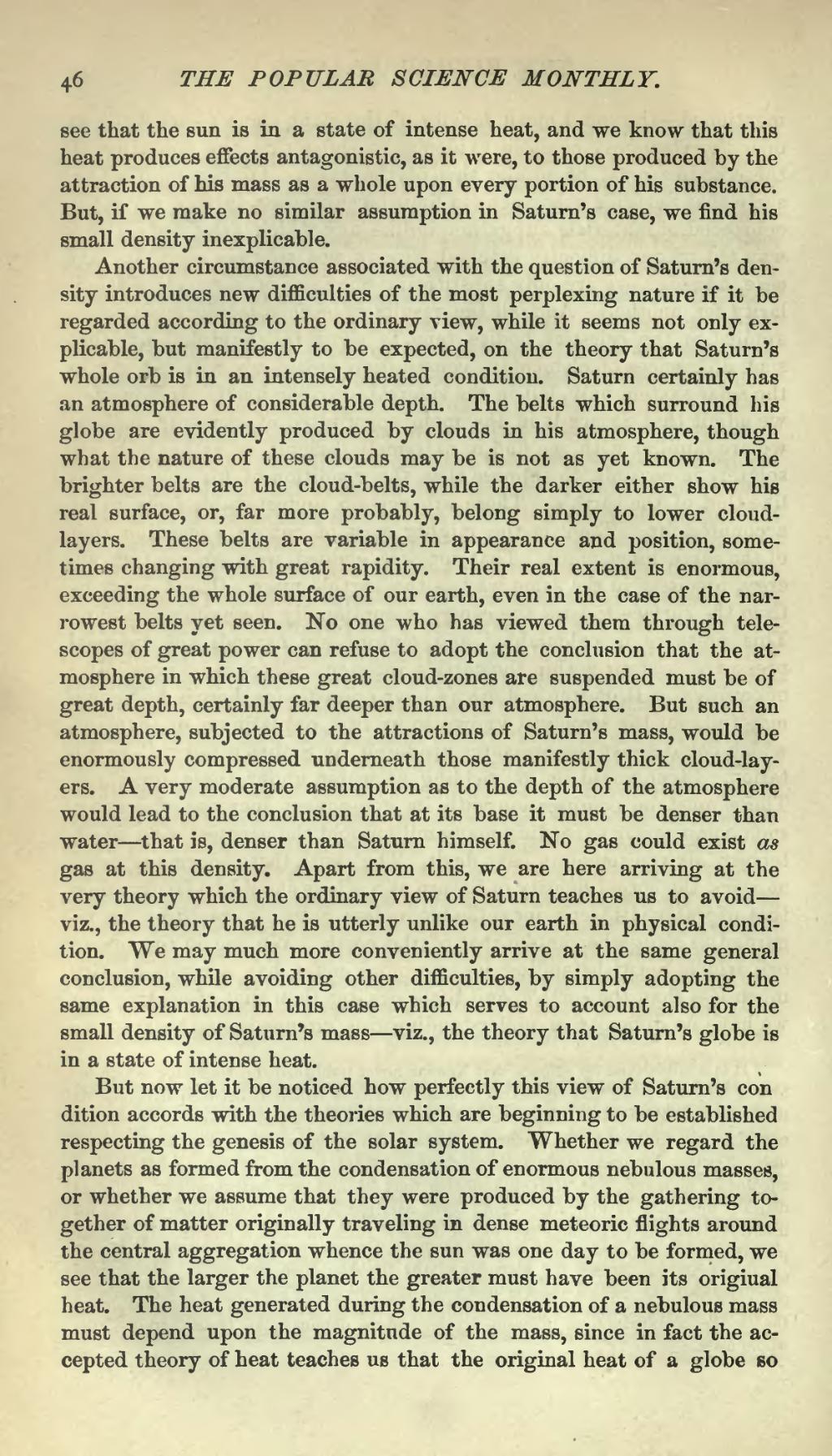see that the sun is in a state of intense heat, and we know that this heat produces effects antagonistic, as it were, to those produced by the attraction of his mass as a whole upon every portion of his substance. But, if we make no similar assumption in Saturn's case, we find his small density inexplicable.
Another circumstance associated with the question of Saturn's density introduces new difficulties of the most perplexing nature if it be regarded according to the ordinary view, while it seems not only explicable, but manifestly to be expected, on the theory that Saturn's whole orb is in an intensely heated condition. Saturn certainly has an atmosphere of considerable depth. The belts which surround his globe are evidently produced by clouds in his atmosphere, though what the nature of these clouds may be is not as yet known. The brighter belts are the cloud-belts, while the darker either show his real surface, or, far more probably, belong simply to lower cloud-layers. These belts are variable in appearance and position, sometimes changing with great rapidity. Their real extent is enormous, exceeding the whole surface of our earth, even in the case of the narrowest belts yet seen. No one who has viewed them through telescopes of great power can refuse to adopt the conclusion that the atmosphere in which these great cloud-zones are suspended must be of great depth, certainly far deeper than our atmosphere. But such an atmosphere, subjected to the attractions of Saturn's mass, would be enormously compressed underneath those manifestly thick cloud-layers. A very moderate assumption as to the depth of the atmosphere would lead to the conclusion that at its base it must be denser than water—that is, denser than Saturn himself. No gas could exist as gas at this density. Apart from this, we are here arriving at the very theory which the ordinary view of Saturn teaches us to avoid—viz., the theory that he is utterly unlike our earth in physical condition. We may much more conveniently arrive at the same general conclusion, while avoiding other difficulties, by simply adopting the same explanation in this case which serves to account also for the small density of Saturn's mass—viz., the theory that Saturn's globe is in a state of intense heat.
But now let it be noticed how perfectly this view of Saturn's condition accords with the theories which are beginning to be established respecting the genesis of the solar system. Whether we regard the planets as formed from the condensation of enormous nebulous masses, or whether we assume that they were produced by the gathering together of matter originally traveling in dense meteoric flights around the central aggregation whence the sun was one day to be formed, we see that the larger the planet the greater must have been its original heat. The heat generated during the condensation of a nebulous mass must depend upon the magnitude of the mass, since in fact the accepted theory of heat teaches us that the original heat of a globe so
